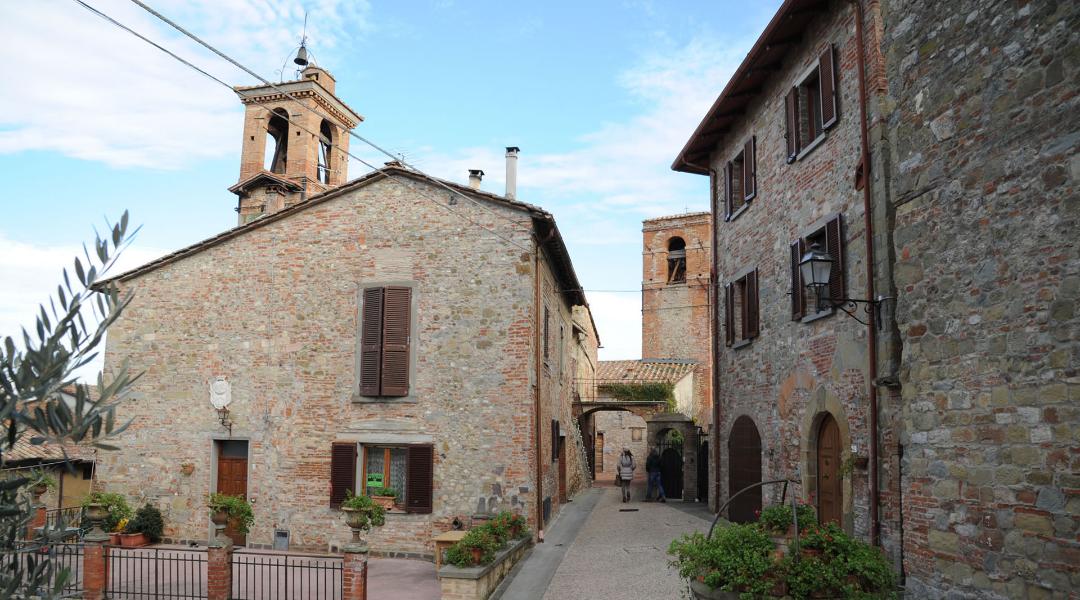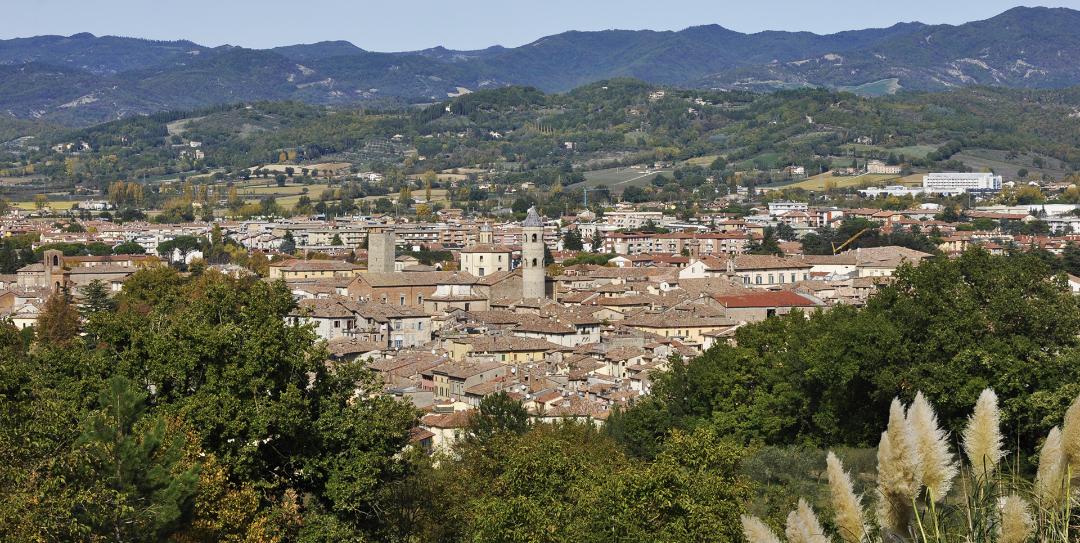This part of the walk will allow you to enjoy the beautiful landscape of northern Umbria: there are no exhaustingly-long climbs, and you'll walk through fields, vineyards and hill towns in the peaceful green silence.
Starting from the village of Citerna you reach Città di Castello after 20.5 km on paved and unpaved surfaces. During the stage, you will have to follow the official yellow and blue signs of the Via di Francesco. Exit the historic centre of Citerna by Via Garibaldi: walk down to the crossroads with the newsstand and turn right in the direction of of L'Eremo del buon riposo and Città di Castello. Take plenty of water because you will only be able to refill after 12 km near Lerchi, where there are fountains.
After about 100 m on an asphalt road with a lot of traffic, turn right onto a dirt road: you will walk slightly uphill among horse chestnuts, oaks and downy oaks. At the fork (at this point you will have covered 4.91 km from the starting point) turn left and after 300 meters continue right to Le Burgne. From here you will enjoy a magnificent and wide view of the Tiber valley and the Umbrian landscape, with hills, villages, forests and churches.
From the crossroads marked at km 6.76, walk down to the right (paying attention to the presence of unleashed dogs) until you reach Caldese; from here, after a short stretch on asphalt, turn onto a dirt road, skirting a buffalo farm and climbing up to the ridge of the hill.
At the junction for S. Lorenzo, walk down to the left to reach Lerchi. Once here, you can choose between the shorter but busier road to reach Città di Castello (along Via Toscana) or decide to pass through the Church of the Madonna della Speranza, turning right and continuing up to Varzo (516 meters above sea level). You will have to continue on the flat until the fork, then take the left; you will begin to see in the distance the bell tower of the Duomo di Città di Castello and you will pass in front of the famous Franciscan Hermitage of Good Rest (Eremo del buon riposo), where St. Francis used to stop when he walked to La Verna. The Hermitage has hosted many well-known religious figures such as St. Anthony of Padua, St. Bonaventure, St. Bernardine of Siena and Blessed Francis of Pavia; it can be visited with the kind permission of the owners, when present.
You will continue through the woods passing through the guesthouse of Villa la Montesca to a grey gate, where you will have to turn right and continue to the Cathedral of Città di Castello, a beautiful city on a human scale whose history has always been linked to art.



























